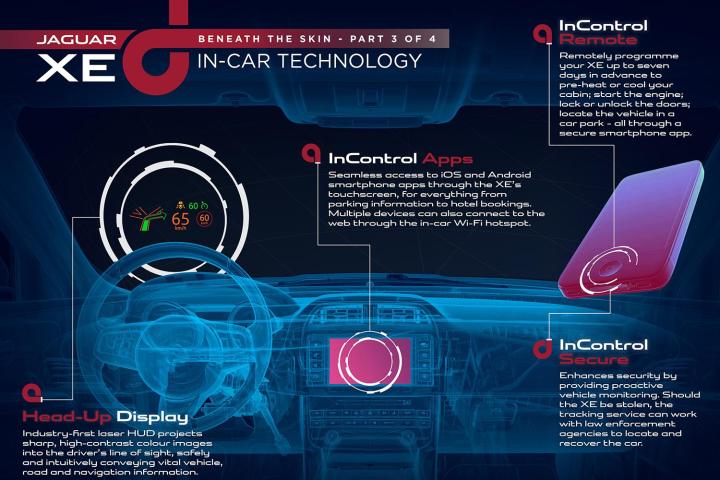
The concept isn’t exactly new. In fact, Land Rover bragged that all of the glass in its Discovery Concept Vision, which debuted in New York earlier this year, would be “Smart Glass” capable of displaying images, directions, and point of interest (POI) information to passengers.
Though Land Rover only boasted this technology in virtual concept form, Jaguar taken the tech one step further and announced that its new XE sedan with offer a laser-projected Head-Up Display, providing drivers with unprecedented augmented reality information about the world outside the car.
The system won’t be able to perch a pleading six-inch tall Princess Leia atop your dashboard, but it will project sharp, high-contrast images on the XE’s windshield using a device that is smaller and lighter than today’s HUD projectors, according to Jaguar.
These laser diodes will contribute to a larger field of view with higher contrast and an extended range of reproducible colors.
Japanese semiconductor supplier Nichia Corp. has announced development of blue and green laser diodes that it says are specifically designed for automotive HUDs. The laser diodes are slated for production in October, 2015. According to Nichia, these laser diodes will contribute to a larger field of view with higher contrast and an extended range of reproducible colors.
Jag isn’t ready to give more details, and, although Pioneer demonstrated a laser HUD system at CES a few years ago, that company is now mum on its progress.
Whichever carmaker rolls it out, using components from whichever suppliers, there is much more to come, reports Danny Shapiro, director of marketing for Nvidia.
To bridge the gap from a simple HUD projecting rudimentary data ahead of the driver to full augmented reality, a few technical improvements are needed, Shapiro pointed out.
Tech gaps
First, the system must be able to project its images over a much larger area to cover more of the driver’s field of view, rather than the small square currently occupied by modern HUD. That way the augmenting information can directly overlay objects the driver is seeing in the real world.
After larger real estate is conquered, the system will have to then need to monitor the driver’s head position so that the projector can align the images with the real objects it is augmenting.
Finally, the system needs a blazing fast processor that can feed these images with as close to zero latency as possible. “It must be nearly instantaneous, because latency creates a weird experience,” Shapiro told Digital Trends.
With virtually zero latency, the HUD could virtually paints arrows and lines on the road ahead, making directions from the navigation system more obvious. Alternatively, the system could paint lines in the sky for the driver to follow, sort of like the overhead cables of electric trolleys, Shapiro suggested. This approach has the advantage of letting the driver see the path further in advance.
Such as system can also create virtual highway signs, or could pop up information regarding POI, like available parking spaces, for example, he said.
And here’s another idea: virtual brake lights on cars ahead. “Hybrid cars engaged in regenerative braking may not always show brake lights,” even though they may be slowing aggressively, Shapiro pointed out.
The HUD could virtually paint arrows and lines on the road ahead, making directions from the navigation system more obvious.
Perhaps best of all, once an advanced projector is in place, backed by a powerful computer, it can perform additional functions in the future through software upgrades.
“It comes down to software and connecting the car to the immediate environment and to the cloud,” Shapiro said. “Sure there are innovations in the optics and LEDs, but it is about really developing sophisticated software applications to leverage the power of the processor. You’ll see new software updates giving you capabilities that weren’t there originally. The laser HUD is just a projector. What we are trying to do is develop a computer platform for the car as opposed to a module with fixed function.”
All of the navigation and artificial brake light functions, however, will be nullified, as cars become increasingly autonomous. In the interim, these laser HUD will bridge the gap between where in-car infotainment is today and autonomous cars of the future.


